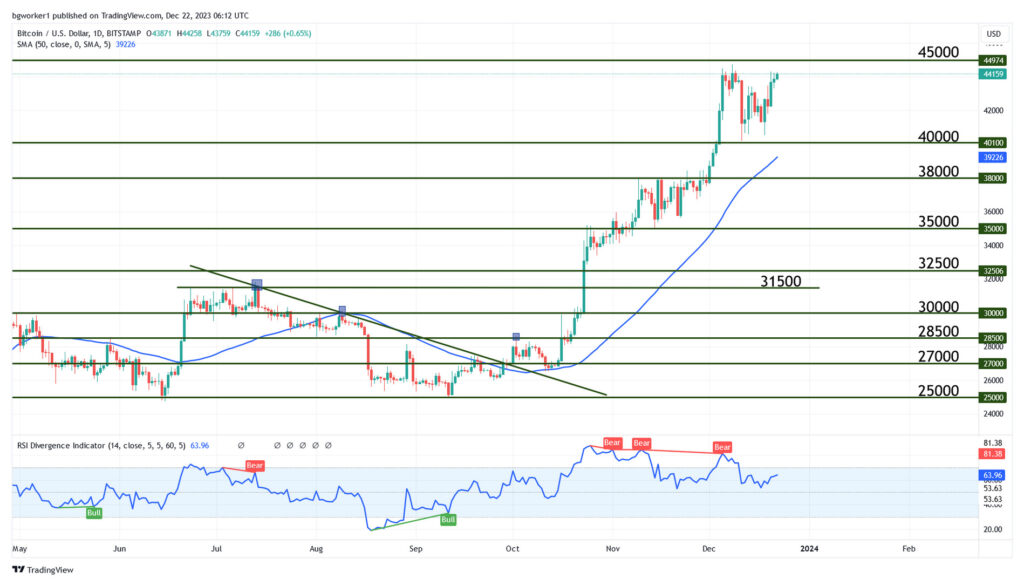Argentina Officially Embraces Bitcoin for Contractual Use
Breaking $45,000: Just a Tall Order or Impossible Ask?
Argentina has made a ground-breaking move by officially approving the use of Bitcoin in contractual agreements. This marks a major step in the crypto-adoption worldwide and puts Argentina among the ranks of El Salvador and others that go all-in when it comes to embracing Bitcoin
President Javier Milei’s move comes at a time of continuous depreciation of the Argentine Peso (ARS), and positions Bitcoin as a viable solution to bring stability to financial transactions. Recently, Milei’s administration introduced over 350 economic “deregulations”, aimed at breaking down long-established barriers in various industries and of course, facilitating the adoption of digital currencies.
It’s important to note that while using Bitcoin for everyday transactions is legal, the Argentine Peso remains the official currency of Argentina. The day-to-day use of Bitcoin for small transactions like purchasing bread or movie tickets is more about the readiness and willingness of individual merchants to accept it rather than a widespread practice endorsed by the government.
The decision to allow Bitcoin in contracts is more about embracing digital currencies as a legal and viable option for financial transactions within the country, but it is not trying to replace or equate Bitcoin with the national currency. This move indicates an openness to cryptocurrency and blockchain technology, but it doesn’t change the fundamental status of the Argentine Peso as the nation’s legal tender.
Chart Analysis – BTC/USD
The pair is playing Ping-Pong between support and resistance, showing almost picture-perfect bounces at each level. After printing the 2023 high at $44,729, Bitcoin retreated to the previous level at $40,000 where it was rejected twice.
At the time of writing, Bitcoin bulls are pushing towards $45,000 once again, raising the question: could we see a break of this major level in 2023? The previous rally failed once at this key resistance but the RSI was overbought and several bearish divergences were present. This time, the RSI is not showing an extreme condition and the bears failed to break support.
In last week’s post, I warned that a ranging period may start if the pair doesn’t print a new high relatively quickly. This is still the case and if we don’t see a boost in momentum (and a consequent break of $45,000 resistance), the probability of range-bound trading will increase.
